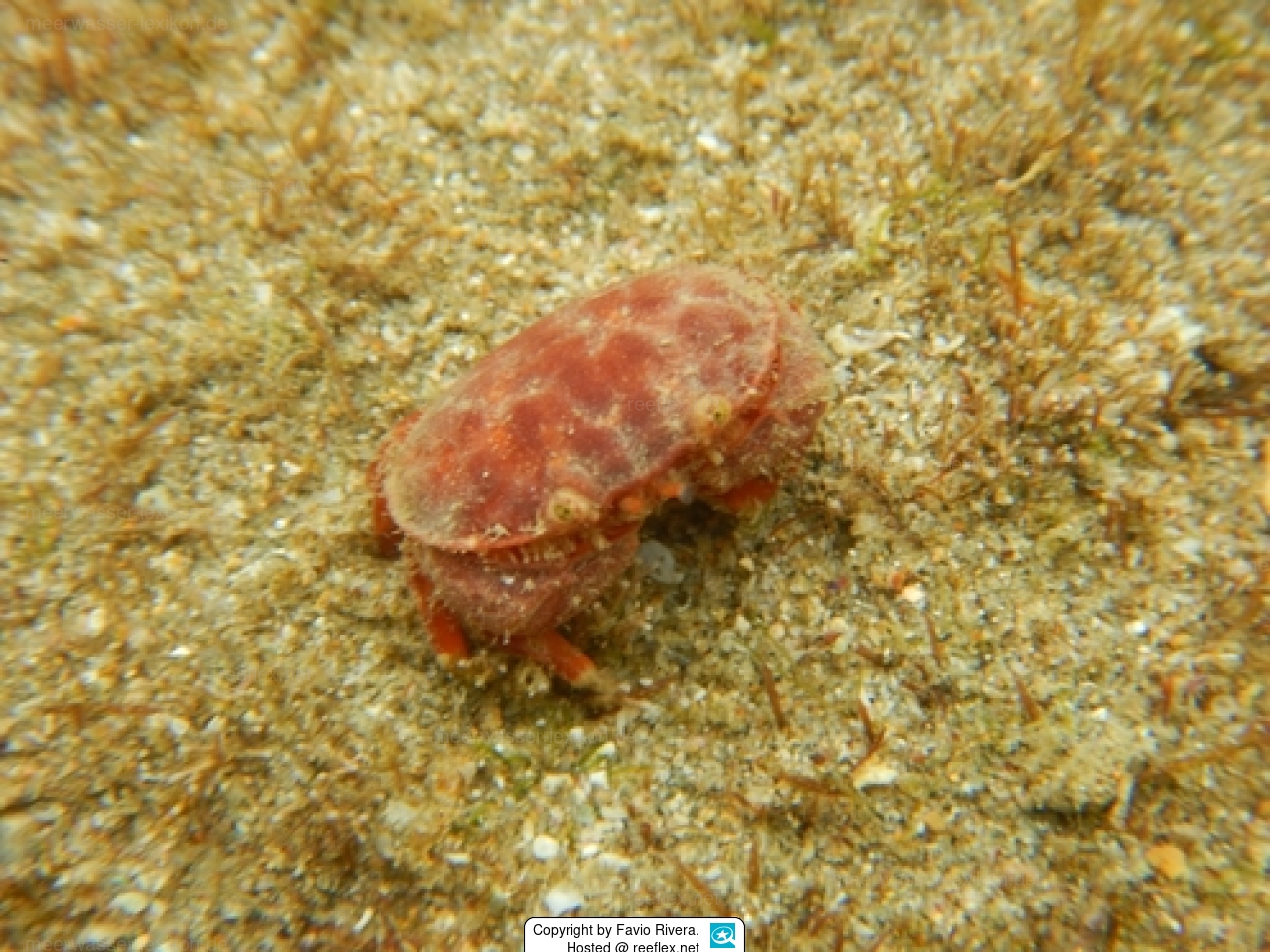Info
The vast majority of crabs are highly venomous, and it has only been proven in a few cases how these crustaceans got their venom.
Platypodiella gemmata is a rather small crab whose carapace grows to about 13 × 18 mm, so you have to look very closely to discover the crab.
Crabs like Platypodiella gemmata warn humans of the high toxicity in their bodies by means of bright, sometimes very strong colors and particularly striking patterns.
Platypodiella gemmata is listed in many checklists, but detailed information about their way of life is missing.
Excursus.
The task of scientists is to develop hypotheses and to verify or falsify them through experimentation.
Scientists at the Universidad de La Laguna, Spain, had set themselves the task of providing evidence that the crab Platypodiella picta had become poisonous. To do this, 60 crabs were brought together with two native Palythoa species, Palythoa caribaeorum and Palythoa aff. clavata, in laboratory experiments for five days.
Result:
The results of this study showed that Platypodiella picta is an active predator of Palythoa species.
The experimental colonies of the crust anemones showed a significant weight loss in the presence of Platypodiella picta for Palythoa aff. clavata and Palythoa caribaeorum, which was even more pronounced in the case of Palythoa caribaeorum!
For those interested, further information can be found here:
https://www.frontiersin.org/10.3389%2Fconf.fmars.2019.08.00160/event_abstract
Many species of the family Xanthidae can be poisonous, although they themselves have no poisonous apparatus (poisonous teeth, poisonous spines, poisonous glands in the skin), the consumption of these crustaceans can even be fatal for humans. Such animals are considered passive-poisonous.
The toxins of crabs (saxitoxin and tetrodotoxin) are produced by endobacteria and stored in the flesh of the crab, these e are highly potent and similar to the neurotoxins of puffer fish and just as deadly.
In its raw and cooked meat, consumption of the crab meat is toxic to humans!
Please be sure to clarify whether the meat of these crabs is toxic or non-toxic before eating it!
Call an emergency doctor immediately at the first signs of poisoning (e.g. breathing problems, muscle cramps)!
The good news is there’s no way you can be exposed to these toxins if you don’t try to eat these crabs – a bite or a jab isn’t going to do the job.
The bad news for those who unwittingly consume these crabs is that cooking the meat isn’t going to make the toxins any less effective.
Fortunately, toxic crabs don’t want to be eaten just as much as we shouldn’t be eating them, so they help us out with their glorious warning colours.
Synonym: Platypodia gemmata Rathbun, 1902
We would like to express our gratitude to Favio Rivera from Ecuador, who kindly provided us with his photo of Platypodiella gemmata!
Many species of the family Xanthidae can be poisonous, although they themselves have no poisonous apparatus (poisonous teeth, poisonous spines, poisonous glands in the skin), the consumption of these crustaceans can even be fatal for humans. Such animals are considered passive-poisonous.
The toxins of crabs (saxitoxin and tetrodotoxin) are produced by endobacteria and stored in the flesh of the crab, these e are highly potent and similar to the neurotoxins of puffer fish and just as deadly.
In its raw and cooked meat, consumption of the crab meat is toxic to humans!
Please be sure to clarify whether the meat of these crabs is toxic or non-toxic before eating it!
Call an emergency doctor immediately at the first signs of poisoning (e.g. breathing problems, muscle cramps)!
The good news is there’s no way you can be exposed to these toxins if you don’t try to eat these crabs – a bite or a jab isn’t going to do the job.
The bad news for those who unwittingly consume these crabs is that cooking the meat isn’t going to make the toxins any less effective.
Fortunately, toxic crabs don’t want to be eaten just as much as we shouldn’t be eating them, so they help us out with their glorious warning colours.
Synonyms:
Atergatis cristatissimo Lockington, 1877 · unaccepted > junior subjective synonym
Atergatis rotundatus Stimpson, 1860 · unaccepted > superseded combination







 Favio Rivera, Ecuador
Favio Rivera, Ecuador







